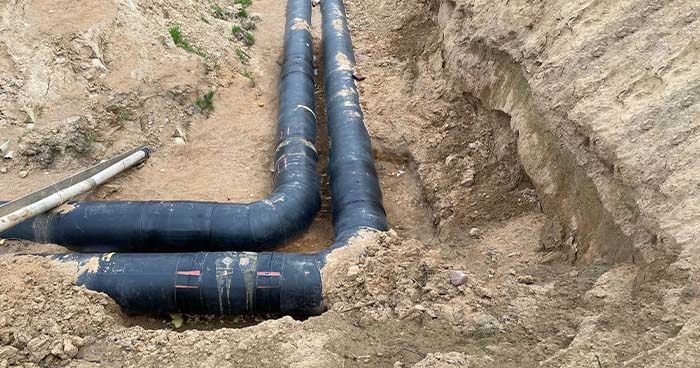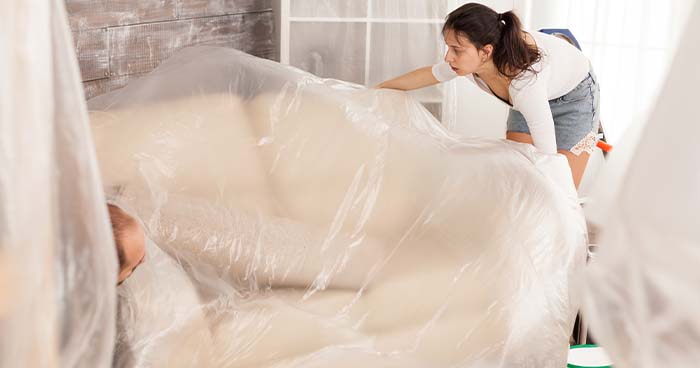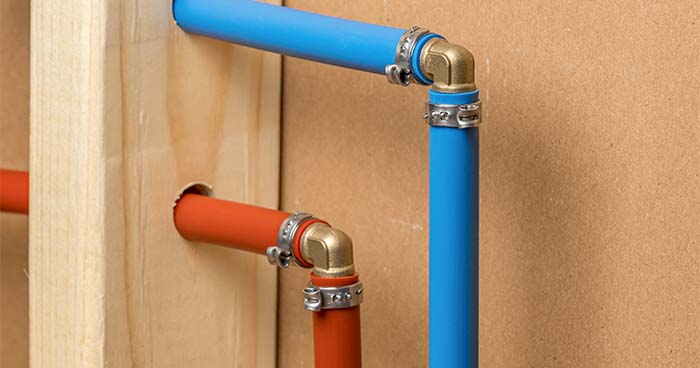What is Involved in Repiping a House?

Many times, older homes have outdated plumbing systems and materials that need to be updated – like any other aspect of your home. If you’re spending a lot on repairs, remodeling, or looking to update your system, repiping is the answer.
Learn all you need to know about repiping your home, including the signs it’s time for this renovation and what you can expect.
What’s entailed in Repiping your Home?
Repiping your home means replacing the old plumbing system with a new plumbing system. Homeowners often repipe their old or damaged plumbing all at once, they may however elect to replace partial sections of the system at a time.

When Would a Homeowner Need to Repipe a Home?
Fully repiping your home is a major renovation and investment, but it’s an important part of keeping your home safe and functional. Here are some signs that it’s time to repipe:
Your Home Has Lead Pipes or Galvanized Steel Pipes
Homes built over a century ago will likely have lead pipes. These pipes aren’t the best material, and if any lead gets into the water supply, it could pose a health risk. Most homes with lead pipes have been updated, but it’s important to check if you have an older home.
No Matter How Many Times You Fix Your Pipes, They’re Still Broken
If you always seem to have costly plumbing repairs, investing in a full repiping may give you the best bang for your buck. You’ll not only eliminate those pesky recurring issues and save on repairs, but you’ll enjoy a new system with longevity.
You’re Remodeling Your Home
If you’re remodeling your home and making changes to rooms with plumbing fixtures, such as the bathroom or kitchen, it’s a good time to consider repiping if needed. This is a bigger project, but you’ll dodge issues like plumbing leaks where the new and old systems connect.
Before You Start – Get an Inspection and Estimate
Repiping your home is a major investment and renovation that requires planning. You will need a plumber to inspect your home and provide an estimate on the labor and materials. You can then decide if it’s best to fully repipe your home or do a partial repiping.
What to Expect During the Repipe Process
Repiping your home typically involves replacing the hot and cold pipes and lines, but it may include other pipes. Here’s what you can expect:
Preparations
To repipe your home, the plumber will need to cut holes in the drywall to access the pipes and construct the new system. It’s important that you cover your furniture and décor to protect it from damage during the renovation.

Plumbers Need Access
Your plumber will need to cut into drywall in multiple rooms in your home. It will all be patched and repainted afterwards, but you need to make sure that furniture, wall hangings, or other obstructions are out of the way to provide access.
How Long Does the Process Take?
Depending on the size and complexity of your home, repiping can take a few days or a week to complete. Remember, your water service will be shut off at least some of the time, which is usually when the system is changed over.

Permitting
It’s important to get a work permit to repipe your home. The process should be started as soon as you decide proceed forward with the project and doneafter the work is complete.
Inspection and Finishing
After your pipes are installed, you will need a professional inspection. Once the inspector signs off, the plumber will be able to patch and repaint the drywall to restore your home’s walls.


